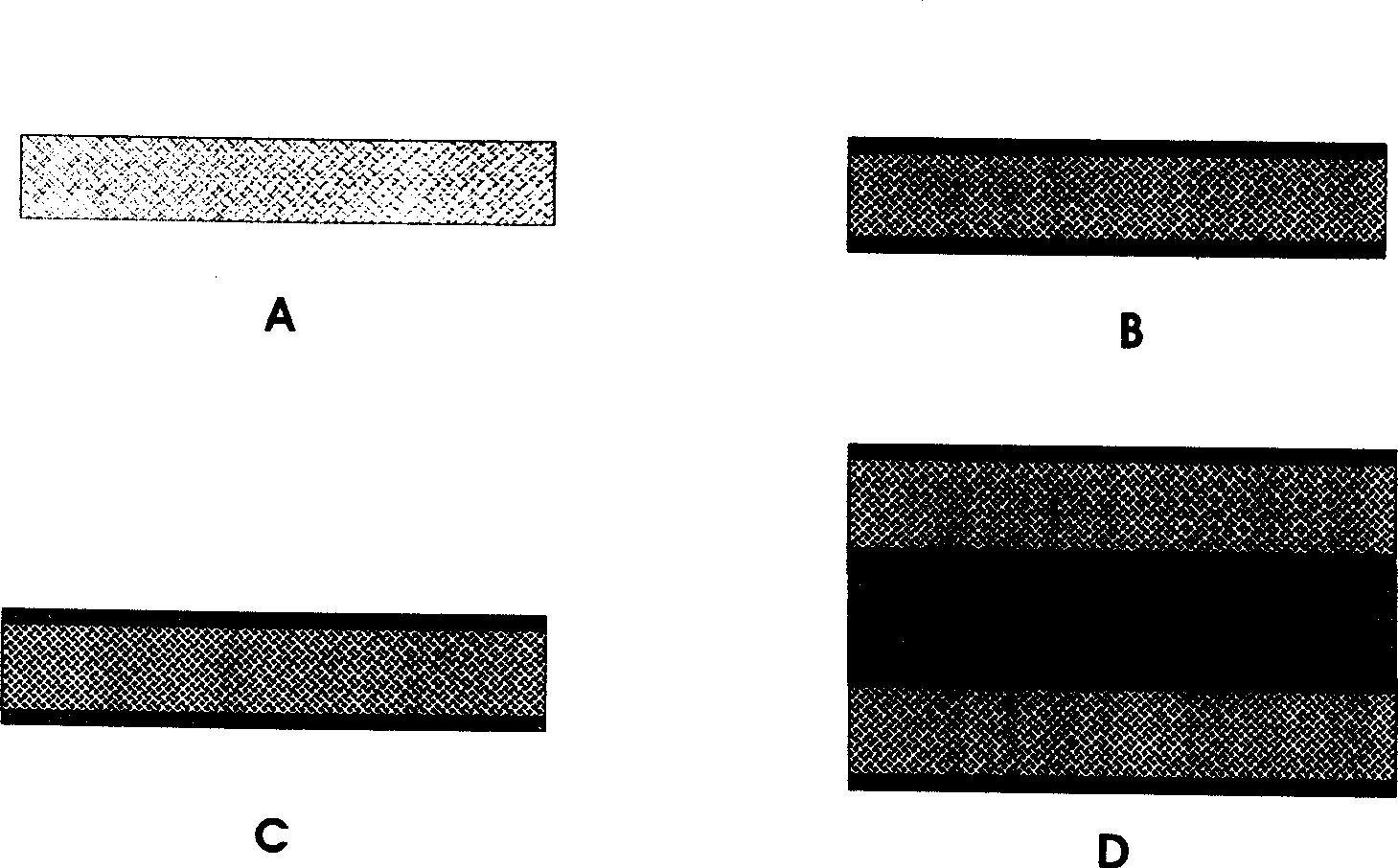Composite proton exchange film for anti-gas osmosising fuel cell and production thereof
A proton exchange membrane and fuel cell technology, applied in solid electrolyte fuel cells, fuel cells, fuel cell components, etc., can solve problems such as battery short circuit and reduced durability of fuel cells, and achieve low permeability and good resistance to reaction Effect of gas permeability and good self-humidification performance
- Summary
- Abstract
- Description
- Claims
- Application Information
AI Technical Summary
Problems solved by technology
Method used
Image
Examples
Embodiment 1
[0039] Select an expanded polytetrafluoroethylene microporous membrane with an average thickness of 10 μm, an average pore diameter of 0.2 μm, and a porosity of 85%, immerse in isopropanol to clean and pre-swell, and after drying, use a thin aluminum frame to clamp the membrane Tight; mix 33ml of tetraethyl orthosilicate and 300ml of absolute ethanol evenly, then add dropwise the mixture of 240ml of absolute ethanol and 60ml of hydrochloric acid with a molar concentration of 0.3M, and keep stirring at a temperature of 50°C for 12h. containing nano-SiO 2 aqueous solution; according to SiO 2 : Nafion The mass ratio of the resin is 1:10 with nano-SiO 2 Aqueous solution and 5wt% Nafion Solution (DuPont company product) mixed, ultrasonic 30min, prepared SiO 2 and Nafion solution; the expanded polytetrafluoroethylene microporous membrane was immersed in the prepared SiO 2 with Nafion solution, after 20 minutes, take out the film, place it horizontally on a heating plate ...
Embodiment 2
[0048] The preparation method of the multilayer PEM is basically the same as that of Example 1, except that the expanded polytetrafluoroethylene microporous membrane has an average thickness of 25 μm, an average pore diameter of 0.5 μm, and a porosity of more than 80%; the inorganic nano Particles are TiO 2 , the preparation method is as follows: add 25ml of glacial acetic acid to 100ml of tetrabutyl titanate, mix well, slowly pour into 600ml of water under vigorous stirring, continue stirring for 3h, after the hydrolysis is complete, add 10ml of 70wt% nitric acid , heated to 80°C and continued to stir for 2h to obtain nano-TiO 2 Colloidal solution; as TiO 2 : Nafion The mass ratio of the resin to 1:5 will be nano-TiO 2 Aqueous solution with 5wt% Nafion The solution was mixed and ultrasonicated for 30min; the carbon-supported Pt electrocatalyst with a Pt loading of 40wt% was fully dispersed in TiO 2 In the Nafion solution, the mass ratio of Pt to solid polyelectrolyte...
Embodiment 3
[0053]The multilayer PEM is basically the same as in Example 1, except that the expanded polytetrafluoroethylene microporous membrane used has an average thickness of 5 μm, an average pore diameter of 0.5 μm, and a porosity of more than 80%; the inorganic nanoparticles used is Zr(HPO 4 ) 2 , the preparation method is as follows: take 1.5M zirconium oxychloride (ZrOCl 2 ) solution 100ml and the dehydrated alcohol of 400ml are evenly mixed, then add dropwise the mixed solution of the dehydrated alcohol of 400ml and 1M phosphoric acid 20ml, continue to stir 24h under the temperature of 80 ℃, obtain containing nanometer Zr (HPO 4 ) 2 Aqueous solution; according to Zr(HPO 4 ) 2 with Nafion The mass ratio of the resin is 1:100 and the nano-Zr(HPO 4 ) 2 Aqueous solution and 5wt% Nafion The solution was mixed and ultrasonicated for 10 min; the carbon-supported Pt electrocatalyst with a Pt loading of 40wt% was fully dispersed in Zr(HPO 4 ) 2 In Nafion solution, the mass r...
PUM
| Property | Measurement | Unit |
|---|---|---|
| pore size | aaaaa | aaaaa |
| thickness | aaaaa | aaaaa |
| thickness | aaaaa | aaaaa |
Abstract
Description
Claims
Application Information
 Login to View More
Login to View More - R&D
- Intellectual Property
- Life Sciences
- Materials
- Tech Scout
- Unparalleled Data Quality
- Higher Quality Content
- 60% Fewer Hallucinations
Browse by: Latest US Patents, China's latest patents, Technical Efficacy Thesaurus, Application Domain, Technology Topic, Popular Technical Reports.
© 2025 PatSnap. All rights reserved.Legal|Privacy policy|Modern Slavery Act Transparency Statement|Sitemap|About US| Contact US: help@patsnap.com



